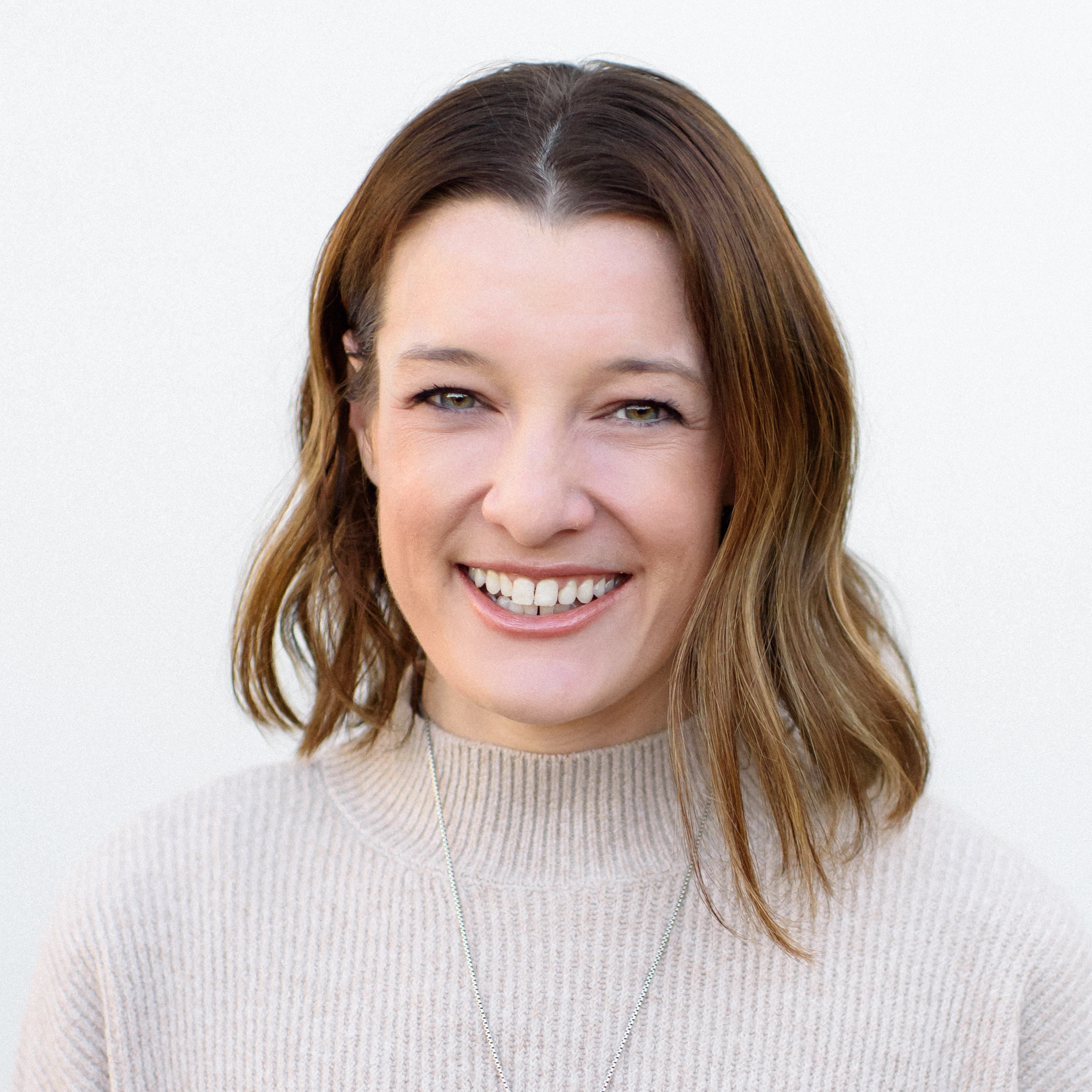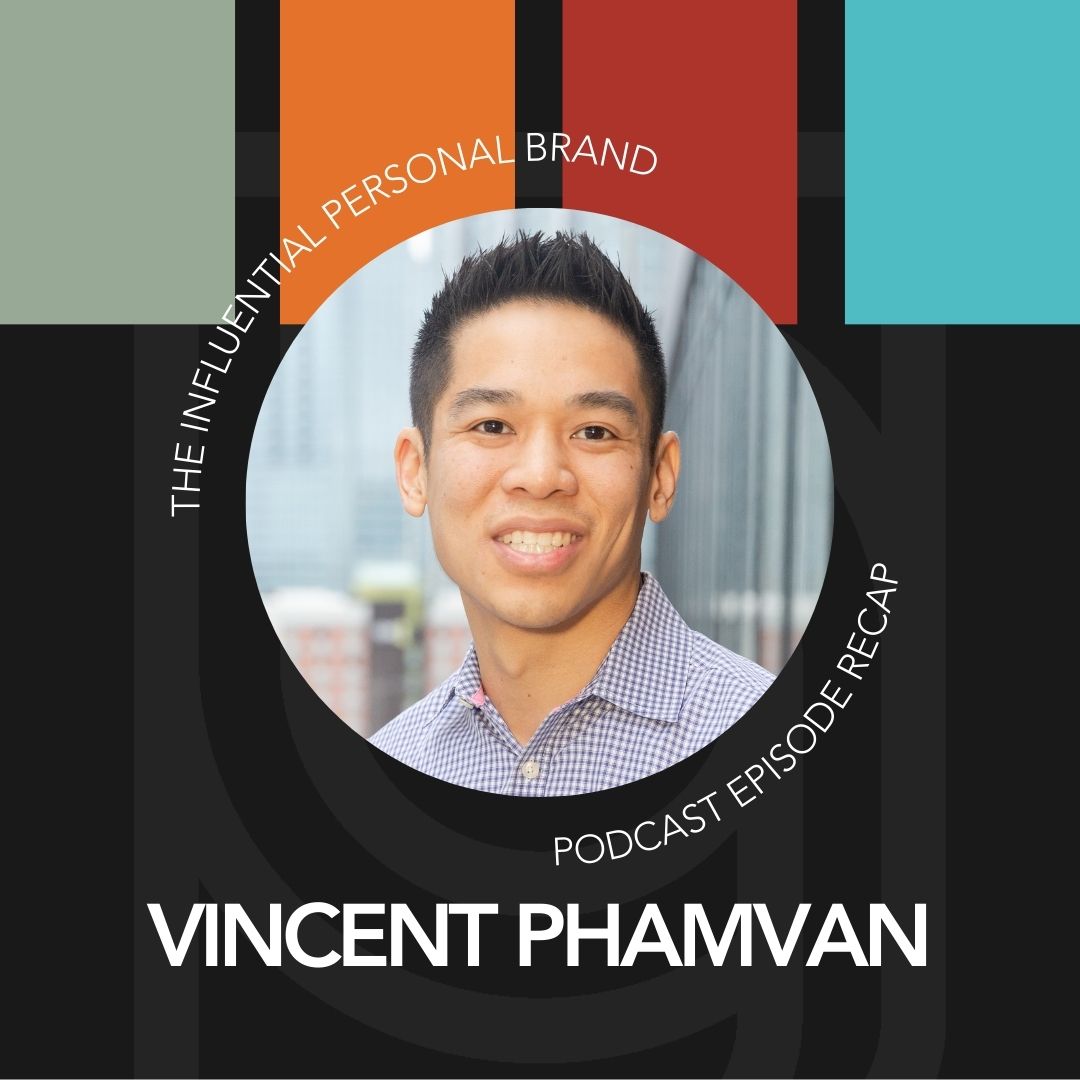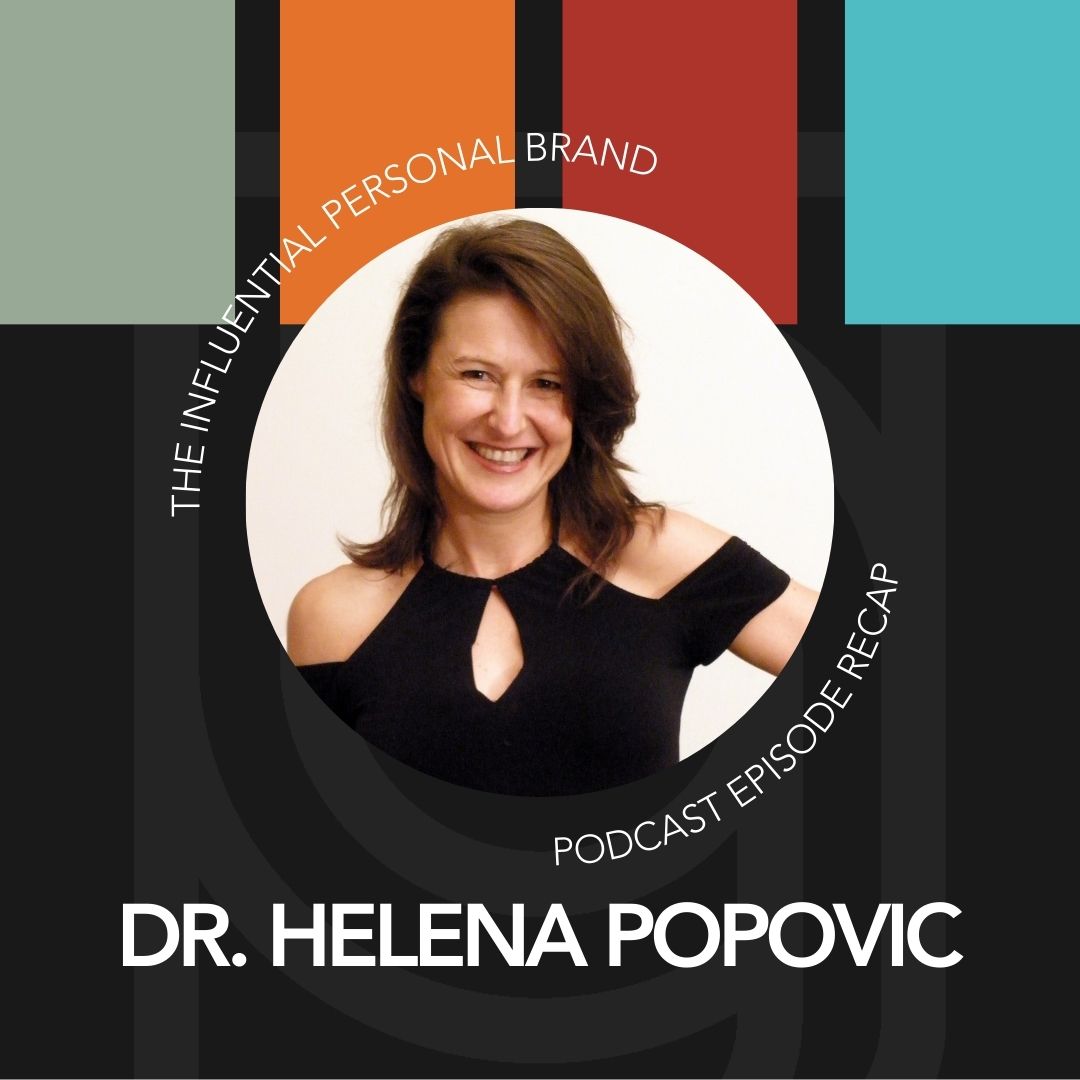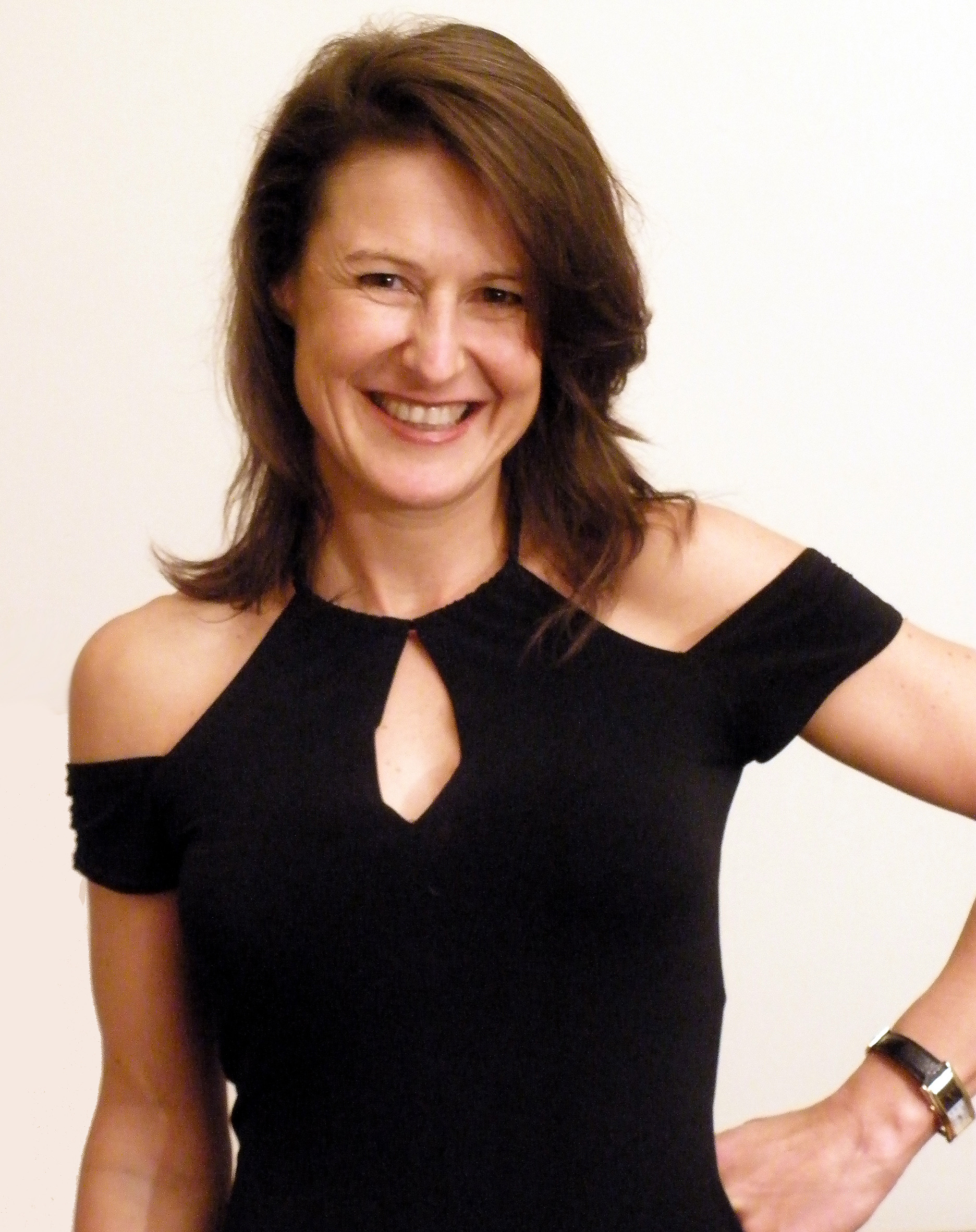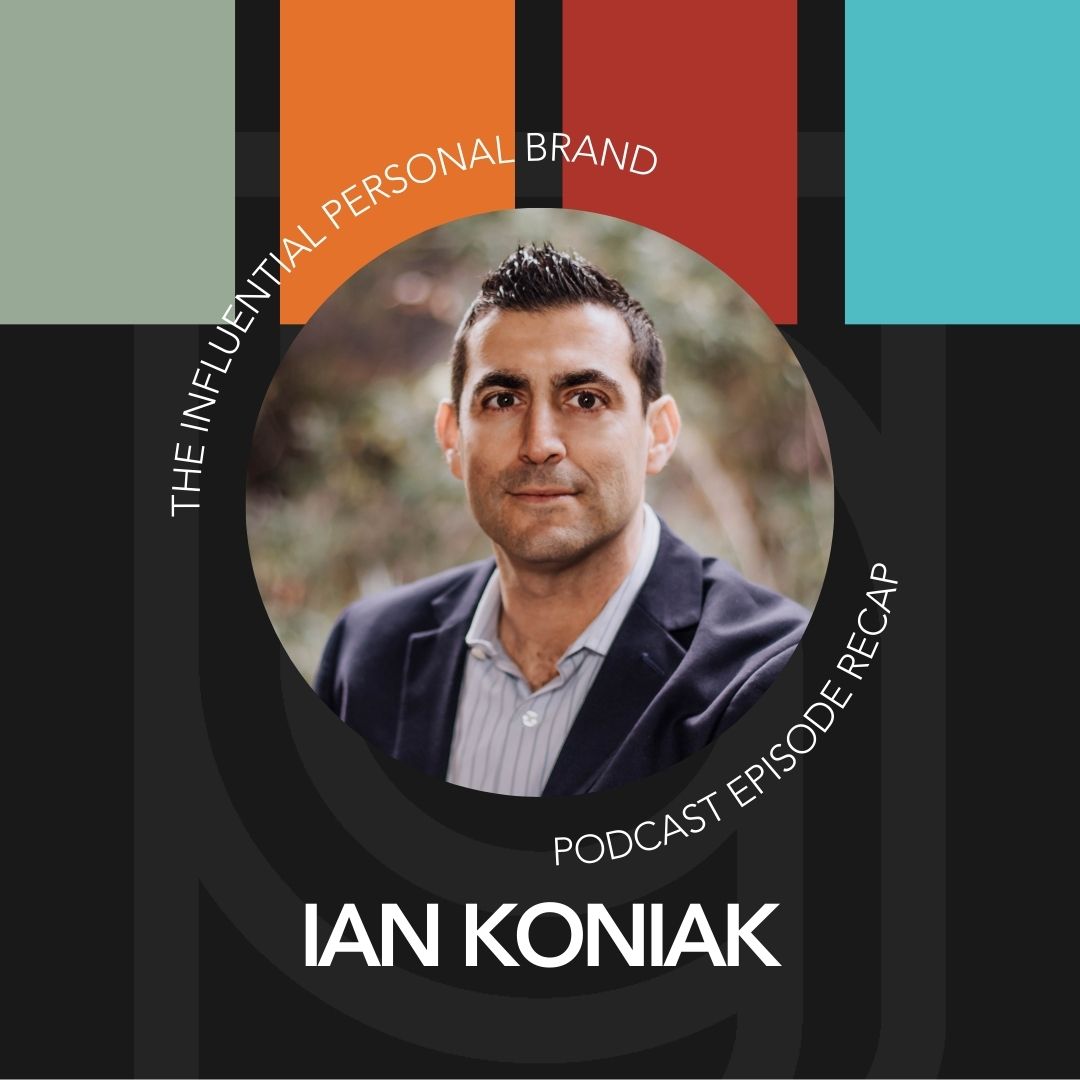RV (00:02):
So I had a very awesome opportunity for about a year in my career. So when we started Brand Builders Group, one of the clients that we had fairly early on was a gentleman named Glen Stanford. And Glenn, it was the billionaire founder and owner of exp Realty. Well, while we were working with Glen, he actually had opportunity to buy Success Magazine and he bought Success Magazine and asked me to come over and be the interim editor. A lot of people don’t know this, but I was the interim entrepreneurship editor of Success Magazine for like a year, and I really loved it. It was the first time I actually worked inside of like a traditional media company, like on the backend. I had written articles and stuff, but never like sort of seen the backend. So I was there at Success Magazine. While I was there, I got introduced to an amazing woman named Lauren Cannon, who you are about to meet.
RV (00:55):
Lauren has worked at Success Magazine. She worked for a while with Brendan Burchard. She now has her own mar. She, she now has her own marketing agency. And she does a lot in the world of marketing automation and funnels. And that’s what we’re gonna talk about today because I really like her and she like me, I think is a fellow nerd, but she doesn’t look like a nerd. She doesn’t act like a nerd, but she is so smart and so brilliant at what she does. I just felt like you needed to have a conversation or listen into a conversation with me and Lauren, her agency’s called Make it Pretty. And so anyways, Lauren, welcome to the show.
LC (01:36):
Hey, thank you so much for having me. I am so excited to be here.
RV (01:40):
So how did you get into the world of marketing automation? Mm-Hmm. , I mean, you’ve been doing this for a long time. I mean, it’s, it’s not that, you know, the industry’s not that old, but you’ve been, you’ve been in this space for a minute.
LC (01:52):
I have, yeah. Almost 10 years now. So I started with project management. I just, success had brought me over and we were launching new courses and we were doing events and they needed help organizing it. And at the time, I was the project manager of all things and process engineering. I love figuring out how things work and how to make them work better and more efficiently. And through the course of doing that, I just started learning every single skill there was in marketing everyone’s role to where I developed to be able to do it. And then I started to put myself further and further into marketing positions.
RV (02:33):
Mm-Hmm. . Yeah. Yeah. So, so you got introduced to the world of marketing automation and then I guess mm-hmm. . So, so can you just, like, for somebody listening who like, isn’t familiar with that term when they hear marketing automation, and let’s go ahead and talk about funnels at the same time mm-hmm. , because I, you know, some people are like, yeah, I’m, you know, I’m a funnel hacker and I know all about funnels, but I think there’s a lot of people who still kind of hear that term and go, you know, isn’t that what info marketers do? Or like, that’s only certain types of people. Can you just define marketing automation and funnels? Like how would you define those terms?
LC (03:10):
Yeah, I would, I would say, you know, specifically, especially with, with the world that, that we’re in, the industry we’re in as you say, the mission driven messengers, it’s a, it’s a vehicle for delivering that mission and that message in the most effective and efficient way. We wanna make sure that someone is spending more time and energy on developing that mission and developing that message and less time and energy on the delivery of it. Mm-Hmm. so funnels and marketing automations are gonna be how you can not only constantly serve people, but how you can constantly reach more people and it becomes this endless cycle of people coming into your world and into your mission.
RV (03:56):
Yeah. And I, that’s, I love that. And I, I feel like, you know, when I think about it, it’s, it’s going in a tactical sense. You’re driving people to your website or to a landing page, typically you’re offering them some type of value and now, you know, some type of a lead magnet, a free asset mm-hmm. , they’re downloading it or subscribing or, you know, tuning into a, a webinar or a challenge or something. And then they’re, and then they’re, and then they’re on your email list, but there’s a lot more between that and getting them to buy. And I think a funnels a sort of like covers the distance between, okay, I, you, I gave you my email address, but between getting their email address and making a purchase to me, like that’s where funnels live. Yes. And a lot of people don’t know, know that much about ’em cuz they’re invisible. Like you don’t, even, when you’re going through one as a prospect or a customer, you often don’t realize mm-hmm. , you’re inside of this ornately designed infrastructure and architecture. But would you, does that, would that sync up with how you think of it?
LC (05:00):
Yeah, absolutely. You know, there are so many people who, like you said, they can funnel hack, they’ll hack a funnel, you know a big launch that just happened in, in the space was Marie for Leo’s Copy Cure. She just opened that up so you can sign up for her lead magnet, get all the emails, see the sales page, and then, you know, ultimately buy or not. But essentially you have the whole email. So now you’ve hacked the funnel, let’s say. But there’s so much more that happens outside of that period of time that Marie has done to develop that sale. And so that’s what really a funnel is. It’s a whole launch system that is year round and your business delivering content in different ways and segmenting your audience in different ways so that you’re delivering value to what that specific person needs.
RV (05:53):
Mm-Hmm. mm-hmm. . So what, what do you think are some of the most like, practical examples of funnels either that you’ve seen or that you’ve worked on or that you build where you go, here’s how and where and when mm-hmm. you would use a funnel, and, and by the way, just for everyone, if you’re totally new to this term, I, I kind of think of as marketing automation as basically like the tools and the process and the science of building funnels, which are these mm-hmm. sort of automated nurture sequences to move someone from, okay, I’m on your email list to now I’m gonna buy, or I’m following you on social, but now I’m gonna ultimately become a customer. So what are the use cases, I guess, of these that you think are either the most common or you think everyone should have or just that you kind of work on a lot
LC (06:39):
Mm-Hmm. ? Yeah. We have we’ve worked on a lot with speakers who after they deliver a keynote speech, they want to leave the audience with something to continue connecting with them and build that, that relationship. And, you know, if you’re a speaker, that connection you make with the audience is one of the most valuable connections you can make. And you don’t wanna walk out the door without giving them the option to continue that relationship. So we’ll do a lot of lead generation from stage where if there’s a QR code and, and typically something that is related to your keynote but is truly of value to that audience member, something that’s gonna help them take whatever your presentation was and either apply it to their lives or accelerate their results into achieving the results you shared. So not necessarily the slides or something like that, but maybe it’s an ebook.
LC (07:43):
We’ve done quizzes and things like that. So getting these people into your email list is always number one. And then from there, it’s really inviting them into this conversation with you. So not necessarily selling right away, just say, you know, Hey, I’m so glad to connect. Here’s my best content and you wanna deliver, you know, three to five excellent pieces of value content and just get them to keep opening your emails. And you just build these nurture sequence along the way. And then as you have offers that are related to that segment, starting to build in the sales sequences,
RV (08:21):
Uhhuh . So that’s a great example. So you’re on stage, you’re doing a speech, speech comes to the end, you say, Hey, here’s a free tool I put together for you. I’d love to stay in touch, text this number or go to this url mm-hmm. or scan this QR code or whatever. And then it takes ’em to a page. It takes ’em to a page. Or it could be, if it’s a text optin, I guess they’re just like sending a message and now they’re on your email list mm-hmm. . And then like how many pieces of you, you said like three to five excellent pieces. Is there like a rule you follow of like the ratio of how much value you really should be given before you ask for a sale or when you ask for a sale? Or like at what are some of, like, philosophically speaking, what are some of those transition points in your mind where you go mm-hmm. , okay, we’re gonna shift the conversation to like, I’m building the relationship, I’m adding value. I’m, I’m basically giving you free instruction, advice, whatever encouragement to then shifting towards making a sale and asking mm-hmm. for like money from somebody.
LC (09:23):
Yeah. Typically the sequence I would I follow is they enter your email list, they saw you on stage, they enter your email list, the first email they get is a personalized, thank you, I’ve got you here. This is the tool, this is how you’re gonna make the most of this tool. And you know, I’ll be checking in with you tomorrow and see how things are going. And then that second email that is, you know, automatically kicks off in your sequence. It is gonna say, again, following up on the tool, saying, I really hope you’ve seen this and this, and the tool, here’s how, you know, I have this piece, this video that really shows how this tool can effectively make your life better. And then, you know, there might be a Ps I’ve got more coming soon, just kind of teasing that you are going to sell them, but you’re still delivering content.
LC (10:17):
And then that third email is gonna be another piece of value content that you’ve already got written if you’ve got blogs or videos. And it’s also gonna be a bigger teaser that’s like, Hey, you know, if you’re interested, I’ve got this program that I’m gonna tell you more about tomorrow. Stay tuned, keep your eyes on your inbox. And then as you get into email four and five, you can start to build that sale up. And it really depends on what your offer is. If your offer is something in the 20, you know, it’s a low ticket, 27 to 1 29 kind of offer, you can start to build that in around email three and four. If your ticket is something that’s really high in let’s say a thousand dollars to $5,000, you’re probably gonna be doing what we call lead stacking. So you’re gonna have almost another lead magnet that they’re gonna raise their hand for that’s gonna give them a little bit more of a sales sequence in it. So a webinar or something like that. And then you’re gonna put them into that sequence.
RV (11:26):
Got it. Uhhuh, . So you, you were, you were talking, one of the things you shared with me, which I, I thought was powerful, is this this relationship between the lead magnet and the offer. So talk, talk, talk us through why that, what that means and why that matters.
LC (11:44):
Yeah. It’s a lot of people, you’ll, you’ll throw together a lead magnet. You know, you need to build an email list and you know, you need a lead magnet to do that. You see opted pages and that is the best way to build your email list. But a lot of things that I see where we need to go and fix some funnels is they have the wrong lead magnet for what they offer. So you need to make sure that what lead magnet you’re showing people is going to align with your offer. Because if it doesn’t, it’s gonna create a lot of misaligned connection points in that you may not have a properly segmented audience. So y your lead magnet may attract an audience that can’t afford your offer. And then your lead magnet content has nothing to do with your offer. So some of the things, you know, I see lead magnets as a sliding scale in terms of their perceived value and how it connects to your offer. So if you have a high ticket offer, an ebook is not gonna be the best lead magnet. Cuz going from a free, let’s call it 20 page e-book into a $5,000 program, that’s a really big jump. So you wanna, the more interactive and hands-on you are in your lead magnet, the higher price your offer can be.
RV (13:06):
So what are some examples? So, so I love that. So, so basically the higher the price of the offer, the more valuable the lead magnet needs to be.
LC (13:19):
Yes.
RV (13:19):
Okay. And then when you mention, you say the lead magnets are like a sliding scale of perceived value. So if you have it, if so, if an e-book is on the low end mm-hmm. , what would be high-end lead magnets? Like, what would be, so let’s, let’s say you do have a, you know, a six month, one-on-one coaching program and it costs, you know, a thousand dollars a month, right? So you have a $6,000 offer some, something like that. What, how would you do the lead magnet differently?
LC (13:48):
I would do a live webinar, but for something like that I would do the lead magnet stacky method, where you may have someone, especially if you’re going with cold traffic, you have this six month coaching program and, and they haven’t heard of you yet. They bought into what you have to offer, what your mission is, and they, you need to build that trust and rapport still. So you may start with a quiz or an ebook, something that is on the lower end of the perceived value chain. And through that you’re gonna say, okay, I’ve given you value. I, I know this about you, and so I know that X is gonna help you even more, which would be your main lead magnet and a live webinar. The higher the ticket, I would do a live webinar. If you’re, if you’re looking at something that’s maybe 2,500, you could do an on-demand webinar, but something like 6,000, I would do a live webinar. Because what happens in those situations, one of the best ways to convert someone into something like that is a live transformation. So we have people that we see that go live on Instagram every single day and do free coaching, but what they’re doing is they’re building this, this audience that sees these live transformations happening and they can fill up their mastermind of it or something like that. So the more you can create that live experience, the more people will pay.
RV (15:25):
Interesting. So, and when you say on demand, when you say like, on demand webinar, just to be clear mm-hmm. , so you’re talking about like a pre-recorded automated, is that what you mean by an on-demand? Yes. Webinar, yes. Okay. And then, and you’re saying that you might be able to, so if you said, okay, I’m gonna give away a quiz or an ebook or maybe a quiz, then an e-book, then an invitation to a webinar, then they’re on a webinar, then at the end of the webinar, which, you know, you’re adding some value for an hour of the webinar or something mm-hmm. , then at the end of that, now you could make a two, a 1500, $2,000 offer, something like that. But if you’re, and you’re saying that could be a prerecorded webinar Yes. But if you’re gonna go north of that, then you would say you would basically invite people to like watch a live coaching and like a live coaching session of you with somebody?
LC (16:18):
Yes. Yes, I would. And I would spend that time, you know, you may say it’s a, an hour long, I would spend that time, the first, first bit of time teaching, have it, make sure it’s a, a masterclass on, you know, part of your framework. And then, then you wanna open it up to be able to interact with that audience and provide coaching transformations. And all along the way, once you get to that segment, you’re starting to infuse what you sell and say, you know, in my coaching program we go deeper into this and, and starting to, to build into that message
RV (16:59):
Uhhuh . So then that just to like talk about the funnel example. So it’s like mm-hmm. , maybe they saw you speak on stage, then you had an offer for a ebook, then you invite them to a webinar, and then at the end of the webinar you sell something or you invite them to, I guess you would invite them to a live webinar mm-hmm. . And then you, you still do, you still basically do a webinar, but you’re saying incorporating the element of like a live coaching session where they see someone go through the process would then be, is like a key thing for selling a high, high like north of a few thousand dollars?
LC (17:35):
Yes. Mm-hmm. .
RV (17:36):
Gotcha. Yeah. Gotcha. How do you use the funnels in the follow up sequence? So like you know, I mean, I guess I would just be curious, like let’s say you did that, let’s say you built all that out and you go, okay, I’m speaking and they’re getting this free thing, and then they’re showing up for a webinar, or they’re here live, they watch this live coaching experience. Like in your experience, do most of the people that are gonna buy buy right on that at that moment when you make the offer? Or is there a follow up that happens afterwards?
LC (18:10):
There’s a follow up that happens afterwards. And I would say from doing, we’ve built so many launches over the years, ed, there’s really this, this sweet spot when it comes to your launch. And even if you’re doing an evergreen, it follows the same type of sequence. It just turns on and off. And so you’re gonna get about 20% of your sales from that webinar. So 20% of the sales you do in your launch are gonna come from the webinar.
LC (00:04):
The rest of your sales are going to come in the last 24 to 48 hours of your launch. And that doesn’t mean that, uh, you can have a two day launch and the rest of your sales come in the next day. We actually have found the best launch timeline is 12 days. And so that creates this ability for you to share more stories and transformations as you lead into that final close down. Uh, and so in those last 48 hours, about 70% of your sales are gonna come in and you’re gonna send probably somewhere between five and six emails. A And so throughout that 12 day period, you’re sending most like an email every single day. But they’re very prescriptive. Uh, you want to tell them what they’re, you wanna focus on a feature that’s in your program, but highlighting it through the benefits language. And you also wanna have emails that act as your faq. But when you ask questions and your email marketing, you’re not answering questions like, how many video modules is this? It’s more of, this is what I have going on in my life. How is this program gonna fit in my schedule? And so you’re, you’re thinking of what are the sales objections someone’s gonna have? And you’re using those as the questions and doing FAQs through that. And then you’re sharing more case studies and stories of testimonials through that 12 day window.
RV (01:40):
Uhhuh . And did I catch that? Yeah. Did I, did you say that you think that roughly 70% of the sales will come in like the last 48 hours?
LC (01:49):
Yes.
RV (01:50):
Yes. And then, and you said you send something like six, six emails in the last 48 or out, so usually like two emails on the second to last day and then like four emails on the, on the LA on the last day, the day of,
LC (02:02):
Yes. Yep. Mm-hmm. . And it’s a lot, it’s a lot of emails and you know, if you’re out there funnel hacking, you’ll notice like there are some that send 10 emails on that last day. But, you know, part of what we talked about earlier with the funnels there, it, it’s a lot of what happens outside of that window. So they may, someone may be on your list and receiving all these emails and you’re gonna get a higher number of unsubscribes during that period. That’s naturally gonna happen. But what you do outside, once that’s finished, what you do outside that period is you’re building that list back up so that when you come back around to launch a significant high ticket, you have a new list of people. And then you also have this list of people that they really enjoyed the messages, they really enjoyed the emails with the stories that you shared, but they just weren’t ready to buy yet.
RV (02:58):
Ah-huh. . Yeah, I mean that’s, I mean, to me that’s really encouraging and such an important thing for people to know. Like, cuz you do this webinar, right? You like, put all this effort into it and then a couple people buy, you know, if you have mm-hmm. , you know, if it, you have a couple people buy and then you’re just like totally deflated and defeated. Like it doesn’t work like this whole thing and you have to have the follow up part of it to pull this all, to pull this all together. Mm-hmm. . Yeah. Um, and so, so in a 12, you, you know, using that like 12 day sequence, so basically is it basically like the first two or three days are getting people to show up for the webinar and then on like day four you run the webinar and then day five and six is like a replay of the webinar and then basically like five to seven days of like, here’s a case study, here’s a question, here’s a story, here’s an extra bonus. Um, if you sign up and then, and then it all ends with like, there’s a deadline. And on that, on this deadline, you know this, there’s four emails on that day. Is that kind of the rough Yes. Arc of it?
LC (04:10):
Yeah. Yeah.
RV (04:11):
How many
LC (04:12):
Yeah, exactly like that. H
RV (04:13):
How many, uh, I know this is a hard question to, to ask and to be pinned, to be pinned down on, but like if you go through this whole process, right? Because this is like, it’s a lot of work and it’s time and it’s money, um mm-hmm. , you build the funnel, you write the emails, you build the email list, you put together the webinar, you do the webinar, you have the live coaching, you have the follow ups, like you do all this stuff in your eyes, what do you see as a successful conversion percentage on of, of a funnel? Right? So let let, I mean mm-hmm. , let’s just say you start with a 10,000 person email list mm-hmm. and go, you know, if I have a 10,000 person email list, how does that whittle down to become how many customers? And like in your eyes where you go, gosh, this, this, you know, this would be awesome. This would be like pretty solid and then, you know, anything less would be like, yeah, it’s less, you know, it’s very much not what we would hope for. Um, yeah, like if, talk me through that.
LC (05:16):
Yeah. So I would say, and I’m not great at mental math, so you may have to help me here. Okay.
RV (05:21):
I can help you do,
LC (05:22):
I’ll do the percentages . Uh, but if you have like a 10,000 person email list and you send out, I’m doing this free master masterclass, it’s gonna be live, it’s your webinar, uh, and let’s say about of your 10,500 sign up for that webinar, you’re not gonna get a huge chunk of people. And then from that 500 about 70% would actually show up to the webinar. And that’s a really good show up rate. It may be more like 50%. Okay. And then from that, the people that stayed on and watched and are now in your s they would probably generate about 5% of sales would be good from that 500. But I would say, I would still say 5% of the 500, that’s what I would track as the math. However, you’re still gonna be emailing your list even if they didn’t show up. That’s where those fourth days are great. Where it’s saying, Hey, you missed it, here’s the replay. And they have a couple days to watch the replay. And even if they don’t ever watch, you’re still sending them through that sales cycle.
RV (06:40):
Yeah. So, so like 5% basically of, so we, we, we call that term funnel conversion percentage, which is the 500 mm-hmm. that opted in a good solid funnel would be like 5%. So 10% would be 50. So 25% would be 25 people. So if you had 500 people sign up for the webinar, a bunch wouldn’t show. You know, some, some would show, a bunch wouldn’t show, some would watch a replay, some wouldn’t. And then I always find it ironic cuz it’s like some of the people who actually buy didn’t do anything. They signed up for the first email. Oh yeah. Waited till the last minute, saw the bonuses and were like, yep, I’m in. And never like watched anything . Um
LC (07:21):
Yep. So we’re all natural born procrastinators, uhhuh, I mean, like you say, procrastinate on purpose. So that’s why that those last days, that’s why the, the timeline is the timeline cuz people are going to wait until that very last minute. And even then, and that’s what’s the hardest is co telling people do not stick to your word. Do not open that cart back up when you close the cart. Because I’ve done it myself where I’ve had FOMO on, on a course and I’m like, oh I know I saw the 27 email that I got from this and it was gonna end, but the next morning I was like, I’m ready to buy and it’s gone. You just, you have to stick to it because you’re gonna open it back up and, and that integrity you’re building with that person is going to convert them. Mm-hmm.
RV (08:08):
. But I think that again, just like it’s good to have you walk through that and I’m glad you said that cuz those, those numbers would match up, you know, I think reasonably with like what the mm-hmm. what we would hope for. I mean our, our best converting funnel that we have is a summit funnel and it’s me interviewing mm-hmm. a lot of our like pretty well known clients and we see about 8% of those people Yeah. Will request a call. So a conversion mm-hmm. for us is, that’s not even a credit card that’s like they request a call. Right. Um, and then mm-hmm. , most of our like, uh, outside of that we’ve got some evergreen webinar funnels that convert it like 5%, but most of them are closer to like two and a half to 4% mm-hmm. . And we’ve got some video funnels that convert at 1.3%. Um, so I think the, um, you know, but if you started with 10,000 people, you might go, oh man, I’m such a failure. I got 20 people to sign up. And it would be like, no, you’re, that’s like, that’s the, that’s how it works. . Yeah.
LC (09:10):
That’s how it works. And you’re doing good. And I mean, that’s a big part cuz it kinda like you said, you’re building a lead magna, you’re building pages, you’re putting people through a webinar, you’re doing, you’re doing so much and people burn out from it. And, and that’s be, you wanna maximize your work and not your effort. And so it’s like you, you have to create all these things, but once you’ve created it once, you can just recycle it. I mean, I can’t tell you with, there are certain funnels out there that they launched twice a year every single year. I’ve gotten the same exact emails in that sales sequence for three years in a row. Hmm. You know, and, and it took me two years before I ended up buying that program. And so it is that like you put in a lot of work and effort to build this funnel, but you can keep it on, tweak it as you go and, you know, everything should start with your program and what you provide, the value you provide and be extracted from that. So if you’ve got a coaching program, take one piece of the framework that you’ve already created and just tweak it a little bit here and there and turn that into your lead magnet. Yeah. Or turn that into your webinar script and then, you know, there’s just so much repurposing and reusing people start from scratch and you should never start from scratch.
RV (10:31):
Mm-hmm. , do you have any, um, tips for Evergreen or on-demand webinars,
LC (10:39):
Evergreen and on demand? I would keep the, I usually like to use those as like my mid ticket kind of funnel. Like if you’re gonna have, if you have multiple offers in your offer suite, I like to use those in my mid ticket price and low ticket. Um, evergreen is, I feel like it’s this unicorn people chase and they think that they’ll sustain an entire business on an evergreen model. Uh, but it, it, you, you need those launches infused there to get those like big pickups of revenue. Uh, and then forever Evergreen. I, we’ve, we’ve run them in the past where, uh, and we have one currently running where it’s to a book and then to a minicourse and to, you know, their entire offer sequence. And the, the secret to it is making sure you build and nurture sequences along the way. So when you do that, say you come off of a sale, you wanna make sure you have about four weeks of just value sequences and it’s not an email every day, but you’re, you’re providing value and then you’re leading into the next thing. And that’s how you can kind of turn that evergreen
RV (11:48):
Uhhuh . And you’re just saying basically like in a series of ascending offers from like mm-hmm. a book to a course to whatever, but you have, it’s like a bunch of mini funnels that you sort of string together with like a value funnel or a value chain in between there of just like, sort of cooling, cooling the jets for a minute and, and going back and adding value. Yes. Mm-hmm. . Yeah. Yeah. Yeah. Um, yeah. That’s really, really interesting. Well, y’all, so if you’re interested in more of this from Lauren and, um, you want to find out more, we set up a little link. If you go to brand builders group.com/lauren, this is our affiliate link. Um, as I said, she’s someone that I have loved working with. I trust her. I, you know, I enjoyed getting to know her. Every time we talk and hang out, I pick up like some really good stuff. And this has been awesome, Lauren. Like, uh, I think even, even as someone who spent a lot of time studying funnels myself, like I always pick up l you know, new things and, and, and tidbits from this. So, um, you know, last thing I would just ask you is, is if someone is considering their very first funnel right now, like what would you say to them mm-hmm. if they’ve never done this before, but they’re kind of like thinking about it, what do you think they should know?
LC (13:05):
I think one of the most important things to know if you’re thinking about this and you don’t know where to start, is focus on providing as much value as possible in the front end. Do not be afraid to tell people what you do and lift the curtains and, and they wanna buy the how. So people will hold back on how much value they share, but they wanna buy, they wanna buy the how. So always provide that value and then knowing that your product is not your offer. So really focus on how are you helping someone apply and accelerate their results. And that’s gonna be your offer. Once you have a solid offer, then you’re ready to launch.
RV (13:53):
Mm-hmm. , I love that. I love that about helping them apply and accelerate their offer. Like, and that’s what it’s really about, right? We’re really trying to mm-hmm. , we’re not just trying to make money from a stranger and be like, ha, we won, we got you. We convinced you to give us your money. Like, we’re trying to deliver a result for people, um exactly. In their lives. And I think that’s exactly, that’s the, that’s the part that is the difference between slime and service. And that’s the part that I think people can vet out and they can sense like, you’re just trying to sell me something versus you actually care about helping me achieve this transformation. So thanks for that, Lauren. Um, we really appreciate it and we wish you all the best my friend.
LC (14:39):
Awesome. Thank you Rory.

